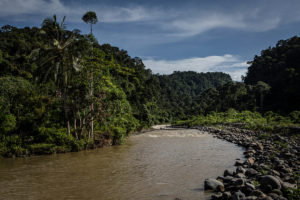A recent statement released by the Climate and Land Use Alliance – a coalition that promotes the role of forests and landscapes in climate change mitigation – was published to coincide with the IPCC special report on limiting global warming to 1.5 degrees Celsius.
The statement, signed by 40 prominent environmental scientists, argues that the preservation, restoration and sustainable management of forests is the world’s best hope for limiting global temperature rises to 1.5 degrees Celsius above pre-industrial levels.
It suggests that benefits would be immediate and estimates that reforestation and improved forest management could provide 18 percent of cost-effective mitigation by 2030. The reasons why are fivefold:
- The world’s forests contain more carbon than exploitable oil, gas, and coal deposits, hence avoiding forest carbon emissions is just as urgent as halting fossil fuel use.
- Forests currently remove around a quarter of the CO2 humans add to the atmosphere, keeping climate change from getting even worse.
- Achieving the 1.5°C goal also requires massive forest restoration to remove excess carbon dioxide from the atmosphere.
- Bioenergy has technical constraints and is therefore not the primary solution.
- Tropical forests cool the air locally and for the entire planet, as well as creating the rainfall essential for growing food in their regions and beyond.

The CGIAR Research Program on Forests, Trees and Agroforestry (FTA) works on enhancing all possible contributions of forests, trees and agroforestry to sustainable development and, in this context, climate change is a major focus of FTA’s work.
TECH-SAVVY BY NATURE
Forests provide a form of ‘natural technology’ that is practical and more cost-effective than alternative carbon removal technologies, which are not yet mature enough for wide application, says Dr. Louis Verchot, a land restoration expert at the International Center for Tropical Agriculture (CIAT) and a signatory of the statement.
Verchot points to the disadvantages of both Carbon Capture and Storage (CCS), which captures emissions from the air or energy production and stores it, often underground, and Bio-energy with Carbon Capture and Storage (BECCS), which combines CCS with the further use of biomass for energy production, holding that the carbon-capture of biomass growth further offsets emissions.
“CCS expends a significant amount of energy, which raises the cost substantially,” he says. “And although BECCS may be more cost-effective, there are concerns related to the safe and permanent storage of carbon dioxide.”
In particular, there are questions related to seismic vulnerability and leakage in BECCS technologies. The production of biomass feedstocks that support BECCS could also be problematic: increasing demand for land, water, and nutrients to produce the feedstocks could increase competition for land, encourage land grabs and potentially increase deforestation as well.

PROTECTING, RESTORING, COLLABORATING
The efforts needed to protect and restore the world’s forests can be informed by the progress of several large-scale restoration initiatives.
First and foremost, the country-led Bonn Challenge, launched in 2011, is resulting in global action to restore and sustainably manage deforested and degraded land.
Other regional initiatives have developed as part of the umbrella challenge, including Initiative 20×20 in Latin America and the Caribbean and AFR100 in Arica. These initiatives depend in part on rural communities and farmers investing in the restoration and long-term sustainability of their land, in turn improving their land rights.
Countries are using technological advancements and satellite imagery to closely monitor land and respond to land encroachment, and the private sector is increasingly focusing on how to turn profits with better sustainability and benefits for both landscapes and local land users.
By tying so many sectors and communities together, these initiatives are now tributaries feeding into the Sustainable Development Goals, Paris Agreement on Climate Change and the UN Biodiversity Convention.
The International Union for Conservation of Nature takes stock of the Bonn Challenge annually and, as of December last year, 47 governments, private associations and other organizations had pledged 160 million hectares to the target of bringing 350 million hectares under restoration by 2030. Stakeholders will meet in Bonn this December to assess how these pledges are translating into action on the ground.
But ultimately, these initiatives – of all scales – must keep forests at the fore, and the scientists argue that forest restoration and conservation efforts must now accelerate. The natural technology that forests provide underpins society’s wellbeing, but the level of degradation in these landscapes across the world are threatening our long-term economic prospects. In the absence of CCS technologies that can realistically work at scale, healthy forests may offer our best chance of limiting global temperature rises and avoiding dangerous climate change.
FTA will be participating in discussions on climate and other topics at the Global Landscapes Forum (GLF) in Bonn on Dec. 1-2, including a discussion forum on REDD+ at 10: What we’ve learned and where we go next. Find out more on FTA’s event page.
By Jack Durrell, originally published at the Global Landscapes Forum’s (GLF) Landscape News.











